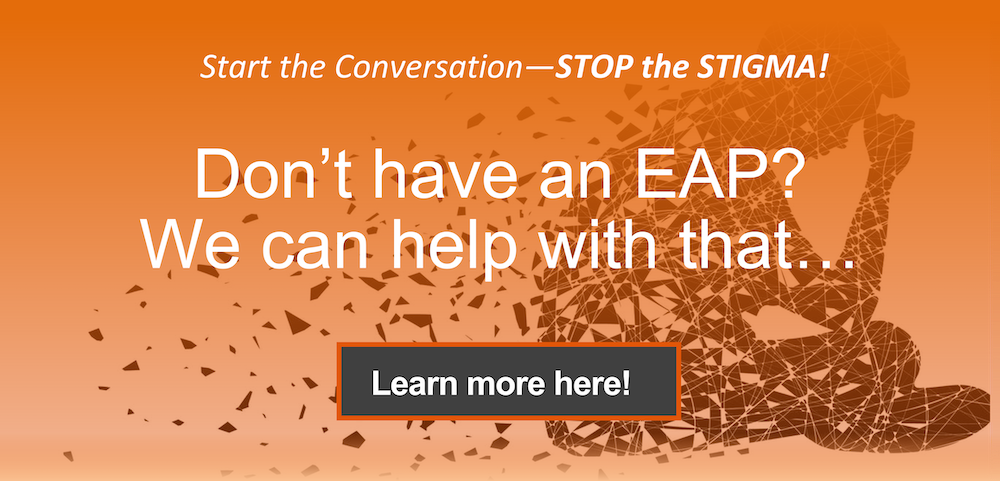Employee well-being is at the forefront of workplace priorities, and for good reason. As mental health concerns continue to rise, employers are turning to a powerful yet often underutilized resource: Employee Assistance Programs (EAPs). These programs can make a significant difference in the workplace, benefiting both employees and employers alike.
Understanding Employee Assistance Programs
Employee Assistance Programs are employer-sponsored services designed to support employees in managing personal or work-related issues that might impact their performance on or off the job. These programs offer a wide range of services, typically including:
- Counseling for mental health and substance abuse
- Financial advice
- Legal assistance
- Wellness programs
- Work-life balance support
EAPs are confidential, often available 24/7, and can be accessed not only by employees but also by their family members.
Why should businesses care about implementing robust EAPs? The benefits are far-reaching:
- Improved employee well-being - EAPs provide crucial support for mental health, reducing stress and improving overall quality of life.
- Increased productivity - When personal issues are addressed, employees can focus better on their work tasks.
- Strong return on investment - A study published in the Journal of Workplace Behavioral Health found that "for every dollar spent for the program, there is an expected return of between $5.17 and $6.47.
- Reduced healthcare costs - Early intervention through EAPs can prevent more serious health issues down the line.
- Enhanced workplace morale - When employees feel supported, it creates a more positive work environment.
- Decreased absenteeism - A Federal Occupational Health outcome study found that "companies with EAPs experienced a 69.2 percent decrease in absenteeism."
Top 10 Ways to Maximize Your EAP
Despite the benefits, EAPs are often underutilized.
In fact, Mental Health America says, "In the U.S., nearly all (98 percent) of mid to large companies offer Employee Assistance Programs (EAPs), but only about 4 percent of employees use them each year."
Here are some tips for maximizing your employee assistance program.
1. Promote Awareness Regularly
Your EAP can't help if employees don't know about it. Regular communication is key to ensuring your workforce is aware of the available services. Consider these strategies:
- Include EAP information in your employee newsletter
- Post flyers in high-traffic areas like break rooms
- Create a dedicated section on your company intranet
- Provide EAP contact information on easily accessible items like magnets or business cards
Remember, consistency is crucial. A one-time mention at new hire orientation isn't enough. Make EAP promotion an ongoing effort.
2. Educate managers and supervisors
Managers play a vital role in promoting EAP usage. They're often the first to notice when an employee is struggling. But are they equipped to help?
Train your management team on:
- The full range of EAP services
- How to recognize signs that an employee might benefit from EAP
- Appropriate ways to suggest EAP services without overstepping boundaries
- The importance of maintaining confidentiality
By empowering your managers, you can create a network of EAP ambassadors throughout your organization.
3. Ensure Confidentiality
One of the biggest barriers to EAP usage is the fear that personal information will get back to the employer. Those suffering from mental health issues or substance abuse disorder may be concerned about potential impacts on their career if they utilize their EAP services.
It's crucial to emphasize the confidential nature of EAP services. To address this:
- Clearly communicate your EAP's confidentiality policy
- Explain that the employer only receives aggregate data, not individual information
- Highlight the option for telephone or virtual consultations, which some employees might find more private
By reinforcing confidentiality, you can help employees feel more comfortable seeking the help they need.
4. offer convenient access
Time is a precious commodity, and employees may hesitate to use EAP services if it means taking time off work or traveling to a physical location. To maximize EAP usage, it's crucial to make access as convenient as possible.
Consider implementing these strategies:
- Offer video-based counseling sessions that employees can access from anywhere with an internet connection. This is particularly valuable for remote workers or those with busy schedules.
- Provide a 24/7 hotline for immediate assistance. This can be especially helpful for crisis situations or when employees need quick advice.
- Develop or adopt an EAP mobile app that allows employees to schedule appointments, access resources, and even participate in text-based counseling sessions.
- Offer EAP services outside of traditional work hours, including evenings and weekends, to accommodate various work shifts and personal commitments.
- For larger organizations, consider bringing EAP counselors on-site periodically. This can increase visibility and reduce the barrier of travel time.
- Create an online platform where employees can access educational materials, self-assessment tools, and request services at their convenience.
5. expand services beyond traditional counseling
While counseling is often the main service offered by EAPs, consider expanding the range of services available for maximum impact. For example:
- Financial planning and budgeting resources can help alleviate financial stress and improve employee well-being.
- Legal assistance can support employees dealing with personal or work-related legal issues.
- Work-life balance resources, such as child or elder care support, can help reduce stress and improve productivity.
By broadening the range of services beyond traditional counseling, you allow for a more personalized approach to employee support.
6. Implement peer support programs
Peer support programs pair employees who are struggling with trained volunteers who have undergone similar experiences. This creates a sense of connection and understanding while providing valuable support for those in need.
Incorporating peer support into your EAP demonstrates a commitment to holistic well-being and can lead to increased utilization rates among employees who may not feel comfortable seeking traditional counseling services.
7. Utilize data to identify trends
Tracking and analyzing EAP data can provide valuable insights into the needs of your workforce. Use this information to identify trends, such as an increase in requests for financial counseling or a decrease in mental health utilization.
This data can also guide future EAP offerings, ensuring that the program is meeting the evolving needs of employees.
8. encourage family involvement
Personal issues often affect not just the employee, but their family members as well. By extending access to EAP services to family members, you create a more comprehensive support system for your employees.
Consider offering resources specifically tailored to spouses and children, such as counseling sessions or educational workshops.
9. address stigma and normalize mental health
Despite progress, there is still a stigma surrounding mental health. This can prevent employees from seeking the support they need through an EAP.
Combat this by openly discussing mental health in the workplace and emphasizing the importance of seeking help when needed. Normalize mental health struggles by sharing stories of successful EAP utilization or hosting educational events focused on destigmatizing mental health.
10. continuously evaluate and improve
Finally, it's important to regularly evaluate and improve your EAP offering. Request feedback from employees who have used the services, track usage rates, and review data to determine areas for improvement.
Consider conducting surveys to gather employee opinions on the effectiveness and accessibility of your EAP. Use this feedback to make necessary adjustments and ensure that your EAP is meeting the needs of your workforce.
Employee Assistance Programs Build Stronger Organizations
Employee Assistance Programs can be a valuable resource for both employees and employers. By following these tips, you can help ensure that your EAP is effectively promoted, utilized, and continuously improving to support the well-being of your workforce.

When you partner with Ulliance, our Life Advisor Consultants are always just a phone call away to teach ways to enhance your work/life balance and increase your happiness. The Ulliance Life Advisor Employee Assistance Program can help employees and employers come closer to a state of total well-being.
Investing in the right EAP or Wellness Program to support your employees will help them and help you. Visit https://ulliance.com/ or call 866-648-8326.
The Ulliance Employee Assistance Program can address the
following issues:
• Stress about work or job performance
• Crisis in the workplace
• Conflict resolution at work or in one’s personal life
• Marital or relationship problems
• Child or elder care concerns
• Financial worries
• Mental health problems
• Alcohol/substance abuse
• Grief
• Interpersonal conflicts
• AND MORE!
References:
Employee Assistance Program (EAP): 10 Ways to Make the Most Out of It; The HR Digest; Jane Harper
https://www.thehrdigest.com/employee-assistance-program-eap-10-ways-to-make-the-most-out-of-it/
Mental health care at work: Roundup of recent research on employee assistance programs; Journalists Resource; Clark Merrefield
https://journalistsresource.org/health/employee-assistance-programs-mental-health/
Top 10 Tips to Get the Most Out of Your Employee Assistance Program; EFAEmployee and Family Resources
https://efr.org/2024/01/10/top-10-tips-to-get-the-most-out-of-your-eap/
Why Don't Employees Use EAP Services?; Psychology Today; Steve Albrecht DBA
https://www.psychologytoday.com/us/blog/the-act-of-violence/201402/why-dont-employees-use-eap-services


